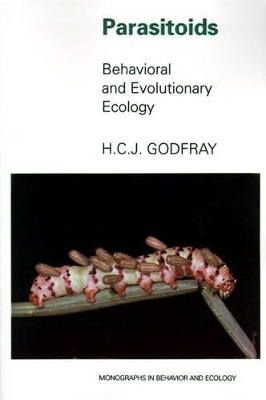
Parasitoids
Princeton University Press (Verlag)
978-0-691-00047-3 (ISBN)
- Lieferbar (Termin unbekannt)
- Versandkostenfrei
- Auch auf Rechnung
- Artikel merken
Parasitoids lay their eggs on or in the bodies of other species of insect, and the parasitoid larvae develop by feeding on the host, causing its eventual death. Known for a long time to applied biologists for their importance in regulating the population densities of economic pests, parasitoids have recently proven to be valuable tools in testing many aspects of evolutionary theory. This book synthesizes the work of both schools of parasitoid biology and asks how a consideration of evolutionary biology can help us understand the behavior, ecology, and diversity of the approximately one to two million species of parasitoid found on earth. After a general introduction to parasitoid natural history and taxonomy, the first part of the book treats the different components of the reproductive strategy of parasitoids: searching for a host, host selection, clutch size, and the sex ratio. Subsequent chapters discuss pathogens and non-Mendelian genetic elements that affect sexual reproduction; evolutionary aspects of the physiological interactions between parasitoid and host; mating strategies; life history theory and community ecology.
A special effort is made to discuss the theoretical background to the subject, but without the use of mathematics.
H.C.J. Godfray is Reader in Evolutionary Biology at Imperial College, University of London.
Acknowledgments1Introduction31.1Parasitoid Definitions61.2Parasitoid Natural History71.3Unusual Life Histories101.4Parasitoid Taxonomy161.5Evolutionary Transitions212Host Location262.1Conceptual Models of Host Location262.2Mechanisms of Host Location292.3Learning422.4Comparative Studies of Host Location482.5Patch Use503Oviposition Behavior833.1Host Acceptance833.2Clutch Size993.3Superparasitism1264Sex Ratio1514.1Sex Determination in Parasitoid Wasps1524.2Fisher's Principle1564.3Local Mate Competition and Sex Ratio in Structured Populations1614.4Sex Ratio and Host quality1924.5Other Factors2025Selfish Genetic Elements2125.1Non-Mendelian Genetic Elements in Nasonia2125.2Microorganisms and Thelytoky2185.3Primary Male Production in Heteronomous Hyperparasitoids2215.4Gregarious Oviposition in Muscidifurax2226The Immature Parasitoid2256.1Host Quality and the Juvenile Parasitoid2266.2Host Defenses2316.3Countermeasures2356.4Host Manipulation by Endoparasitoids2486.5Interactions between Immature Parasitoids2557The Adult Parasitoid2607.1Size and Fitness2607.2Mating2657.3Resource Defense and Maternal Care2847.4Host Defense against the Adult Parasitoid2857.5Dispersal2917.6Defense from Predators2987.7Host Synchronization3018Life Histories and Community Patterns3078.1Life History Evolution3078.2Host Range and Parasitoid Species Load3218.3Parasitoid Diversity355References367Author Index449Subject Index459Taxonomic Index465
| Erscheint lt. Verlag | 16.1.1994 |
|---|---|
| Reihe/Serie | Monographs in Behavior and Ecology |
| Zusatzinfo | 69 line illus. |
| Verlagsort | New Jersey |
| Sprache | englisch |
| Maße | 197 x 254 mm |
| Gewicht | 680 g |
| Themenwelt | Naturwissenschaften ► Biologie ► Evolution |
| Naturwissenschaften ► Biologie ► Zoologie | |
| ISBN-10 | 0-691-00047-6 / 0691000476 |
| ISBN-13 | 978-0-691-00047-3 / 9780691000473 |
| Zustand | Neuware |
| Haben Sie eine Frage zum Produkt? |
aus dem Bereich


